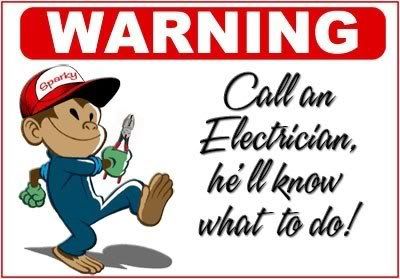Mike Cutler
Member
A little background
I am renovating our bathroom at present. Bathroom was last re-wired in 1979-80. The bathroom is 10'x5'
I am installing a shower vent fan/light. Manufacturer states to put it on a GFCI protected circuit, and it is.
Dedicated 20 amp GFCI protected duplex receptacle circuit is in place. Receptacles are located appropiately.
Lights are on their own circuit.
There really were no wiring changes. The original wiring was 12AWG for duplex receptacles and 14AWG for lights.
At the point where the wiring went through the joists, the old knob and tube holes were used, 1919 house, and during the last 30 years mice had enlarged some of the holes and chewed away the outer jackets of the romex. No bare conductors exposed though. So I chose to replace all the wiring with 12awg back to the panel. The mice and hole problem will be addressed prior to sheet rocking.
Now the question(s).
I am also installing an EconoHeat, thermal panel, 120 vac, 400 watts, below the bathroom window. This thermal panel plugs into a clock receptacle located behind it, but the power is being controlled by an Aube TH-115 pulse width modulating, smart,temperature controller ( The receptacle is wired to the output of the controller)
Does this installation require a seperate, and or, GFCI protected circuit? There was no heat in this bathroom prior to this. It's a little wierd
Thank you for any insight and help.
Mike
I am renovating our bathroom at present. Bathroom was last re-wired in 1979-80. The bathroom is 10'x5'
I am installing a shower vent fan/light. Manufacturer states to put it on a GFCI protected circuit, and it is.
Dedicated 20 amp GFCI protected duplex receptacle circuit is in place. Receptacles are located appropiately.
Lights are on their own circuit.
There really were no wiring changes. The original wiring was 12AWG for duplex receptacles and 14AWG for lights.
At the point where the wiring went through the joists, the old knob and tube holes were used, 1919 house, and during the last 30 years mice had enlarged some of the holes and chewed away the outer jackets of the romex. No bare conductors exposed though. So I chose to replace all the wiring with 12awg back to the panel. The mice and hole problem will be addressed prior to sheet rocking.
Now the question(s).
I am also installing an EconoHeat, thermal panel, 120 vac, 400 watts, below the bathroom window. This thermal panel plugs into a clock receptacle located behind it, but the power is being controlled by an Aube TH-115 pulse width modulating, smart,temperature controller ( The receptacle is wired to the output of the controller)
Does this installation require a seperate, and or, GFCI protected circuit? There was no heat in this bathroom prior to this. It's a little wierd
Thank you for any insight and help.
Mike
Last edited:


